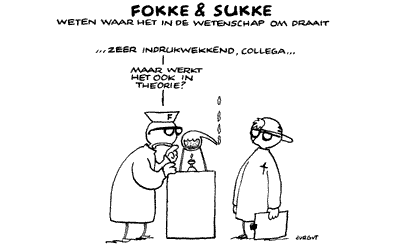[quote author="matthias"]What I'd like to know is, if it's not better to clock the ada8000 converters over the optical-adat-cable...
or are there any other disadvantages?[/quote]
That's a tough one.
As far as I can tell, there are three ways to clock an ADA8000: internal, word clock and ADAT. As with any converter, the internal clock will give best jitter performance, but that's not an option if you need to have multiple units running in sync. The ADA8000 uses a simple 4046 CMOS PLL with what amounts to an RC VCO to sync to WC, or the AL1402 for ADAT clock. Neither look particularly good from a jitter POV.
So which is best ? Hard to say. The optical link is inherently more jittery than a 75-Ohm coax cable, and the Q of the external capacitor on the 4046 is probably higher than the VCO cap or ring oscillator that's integrated in the AL1402. Then again, the ADAT signal has way more transitions than the Word Clock, which could conceivably yield lower jitter.
If you want you can test which setup gives lowest jitter. Hook up one of your ADA8000 channels in loopback (say, ADA8000 output #1 directly to input #1). Create a 16kHz sine wave in your DAW with an amplitude that's just below clipping (~0.5dB is fine) when transmitted over this loopback setup. Now do three full-duplex loopback tests:
1) with the ADA8000 running from internal clock, and the RME slaved to this. For this test it doesn't matter if you sync the RME to WC or ADAT. This is your baseline.
2) with the ADA8000 locked to WC from the RME
3) with the ADA8000 locked to ADAT from the RME
Get yourself some analysis software that will do a high-resolution FFT analysis. Maybe your DAW has it integrated, otherwise you could probably trick RMAA into it, or http://focus.ti.com/docs/toolsw/folders/print/adcpro.html (thanks 12afael for that link). Compare the frequency plots of all three experiments, and pick WC or ADAT sync depending on which of (2) or (3) is closest to (1). In my experience peaks in this spectrum are 'worse' (ie more audible) than an overall rise of the noise floor.
Random notes:
- these results are valid for the setup that you tested only. Switch between 44k1 and 48k, or run your desk chair over the WC cable a few times and the outcome may well change.
- you want to use as high a test frequency as possible, as jitter artifacts become more visible for higher frequency. Then again, you want to stay well away from the LPF corner set by the antialiasing filter. IME 16kHz is a good compromise.
- my software suggestions are rather vague as I do most of my FD testing with custom tools on UNIX systems, and have little experience with pre-cooked solutions on either Windows or MacOS. If you want I can dig up my source code, but be warned that it's pretty ugly code with few comments, never intended for an external release.
Good luck, and do let us know what you come up with,
JDB.
[EDIT 20080902: Fixed the test procedure by changing 'external clock' to 'internal clock'.]



